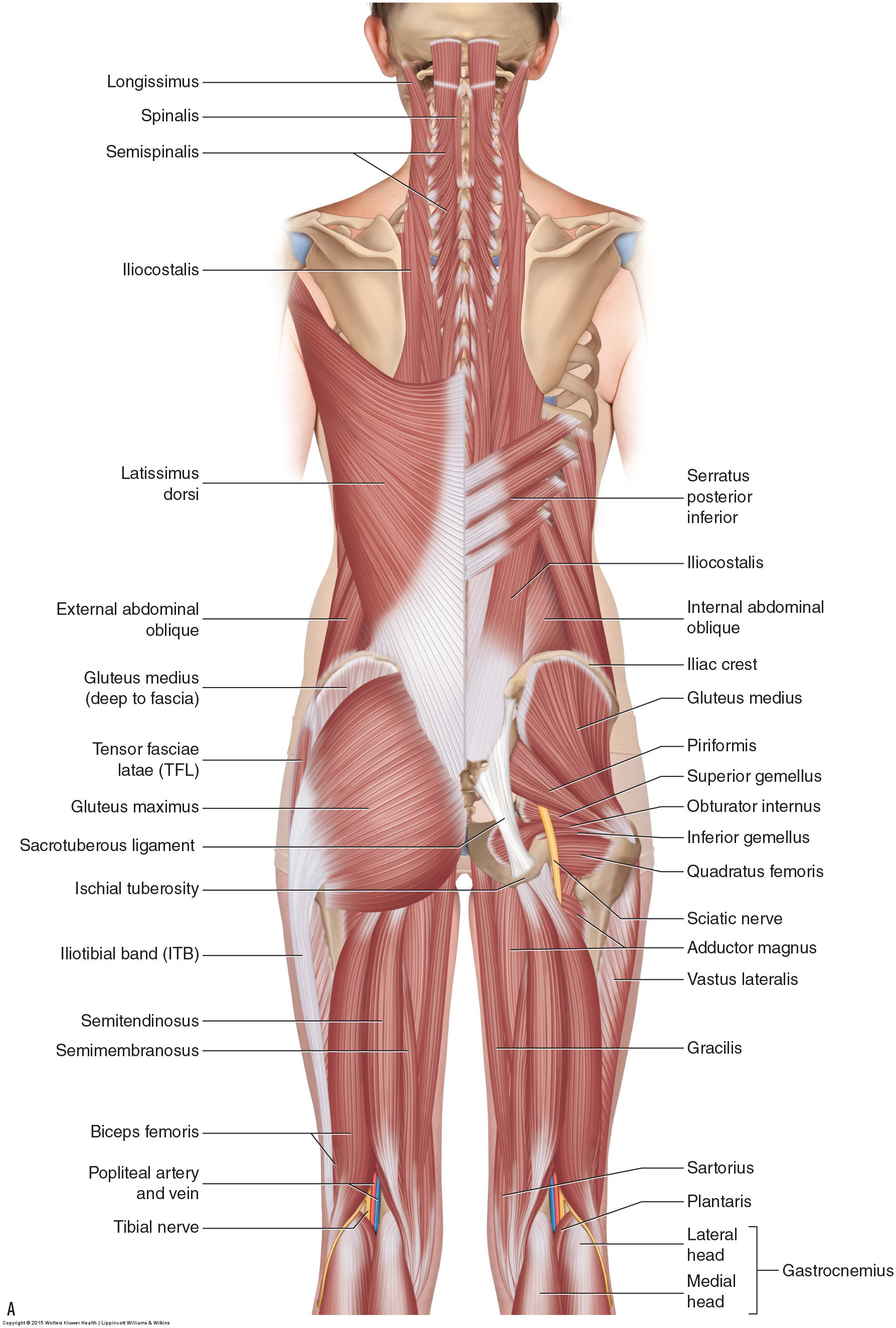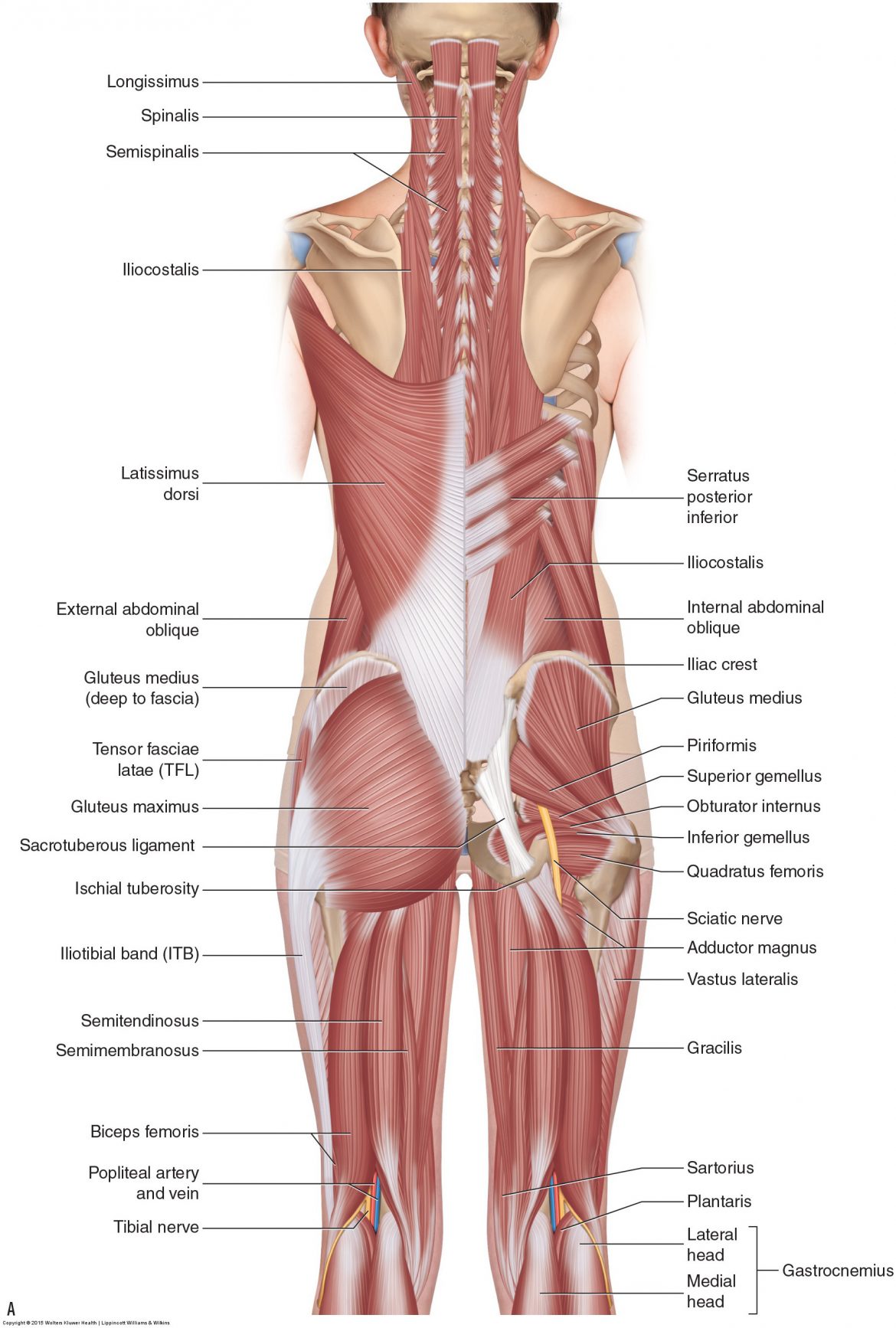Introduction to Hamstring Strain:

The hamstrings are composed of the semitendinosus, semimembranosus, and the biceps femoris muscles. Permission: Joseph E. Muscolino. Manual Therapy for the Low Back and Pelvis (2015).
A hamstring strain, also known in lay terms as a hamstring pull, is a tearing of the hamstring musculature. The hamstring group occupies the majority of the posterior compartment of the thigh. There are three muscles in the hamstring group. They are the semitendinosus and semimembranosus on the medial side, and the biceps femoris long head and short head on the lateral side. The semitendinosus is the more superficial of the medial hamstrings. The long head of the biceps femoris is the more superficial of the lateral hamstrings. All parts of the hamstring group cross the knee joint posteriorly; therefore they all flex the knee joint. All parts of the hamstring group except the short head of the biceps femoris cross the hip joint posteriorly, therefore they extend the thigh and posteriorly tilt the pelvis at the hip joint. The semitendinosus, semimembranosus, and long head of the biceps femoris attach proximally to the ischial tuberosity; the short head of the biceps femoris attaches proximally to the linea aspera of the femur. All parts of the hamstring group attach distally to the proximal aspect of the leg.
Most hamstring strains occur at the proximal musculotendinous junction; the biceps femoris long head is the most commonly strained hamstring muscle.
Causes:
There are two major causes of a muscle strain. One is stretching (lengthening) the muscle so far that the external tensile force placed upon it tears myofascial fibers. The other is contracting the muscle so forcefully that the internal tensile force of the contraction causes tearing of muscular fibers. Hamstring strains most often occur due to being overstretched. The hamstrings are especially susceptible to strain because they are multiarticular muscles, crossing both the knee and hip joints (except for the biceps femoris short head which crosses only the knee joint). Therefore, if they are stretched across both joints, the tensile load placed upon them can overwhelm their ability to stretch and they can tear. This is especially common at the end of the swing phase of the gait cycle as the lower limb reaches out in front when the thigh is flexed at the hip joint and the leg is extended at the knee joint (both of these joint actions are antagonistic to the actions of the hamstrings and lengthen them). Therefore, hamstring strains occur most frequently during sports in which running is involved.
A strain due to contracting the hamstring musculature also occurs when running, but occurs at the end (or just after the end) of the stance phase when the thigh in back is extended at the hip joint and the leg flexes at the knee joint. Therefore, the hamstrings are forcefully contracted, and the internal tensile force of the contraction tears the musculature.
Factors that increase the likelihood of a hamstring strain are stretching or contracting the hamstrings when they are not warmed up, when they are tight/inflexible, and/or fatigued. Compression against the hamstrings and previous injury also increase the likelihood of a hamstring strain. The hamstrings can be tight/inflexible due to global tightness, myofascial trigger points, and/or fascial adhesions. Fatigue due to overuse can be due to excessive participation in running sports, or simply chronic posture that places an excessive demand upon them, such as when working on one’s knees because this posture places a constant isometric demand on the hamstrings to prevent falling forward (into extension at the knee joint). Sitting on a hard chair that is too high for the individual such that the feet do not rest comfortably on the floor can predispose the hamstrings toward developing myofascial trigger points due to the pressure of the end of the chair against the posterior thigh, impeding proper circulation to the tissues. Previous injury to the hamstrings usually results in increased baseline tone and fascial adhesions, which then predisposes them to further strain injury.
An imbalance between the strength of the hamstring and quadriceps groups can also increase the risk of a hamstring strain. The quadriceps group is usually much stronger than the hamstrings; this places an increased load on the hamstrings as they attempt to counter the pull of the quadriceps at the knee and hip joints. Sacroiliac joint dysfunction can also predispose the client/patient toward developing a hamstring strain. Via its myofascial meridian (anatomy train) connection to the sacrotuberous ligament that connects to the sacrum, the presence of sacroiliac joint dysfunction and/or pain can trigger the nervous system to increase the tone of the hamstring musculature in an effort to stabilize the sacrum at the sacroiliac joint.
Note: Quadriceps Femoris Strains
Note: Strains occur more often to the hamstring group than the quadriceps femoris group for two reasons. Three of the four heads of the hamstrings are multiarticular whereas only one of the four quadriceps heads are multiarticular; being multiarticular places a greater tensile load on a muscle. And the hamstring group is usually much weaker than the quadriceps group, making it less able to deal with the tensile forces placed upon it.



